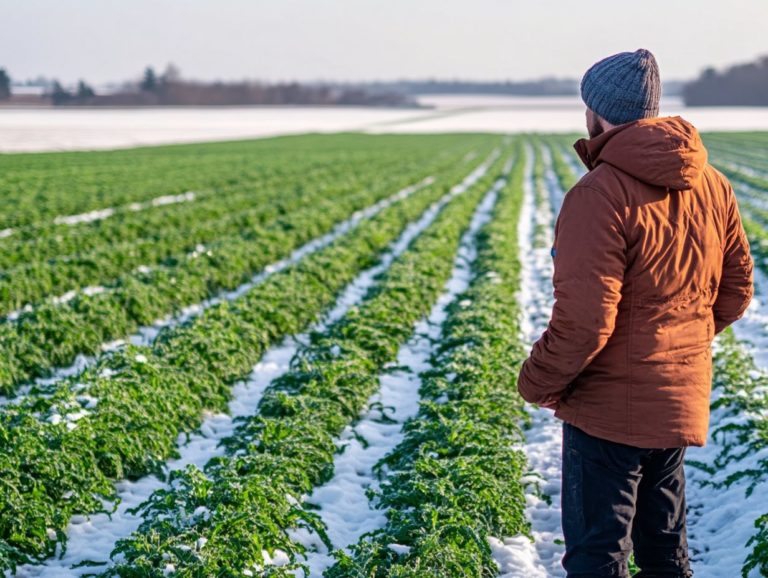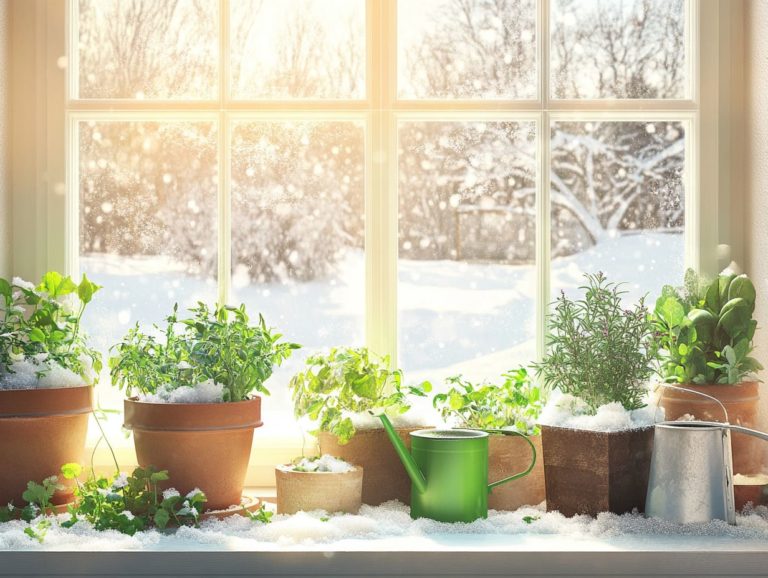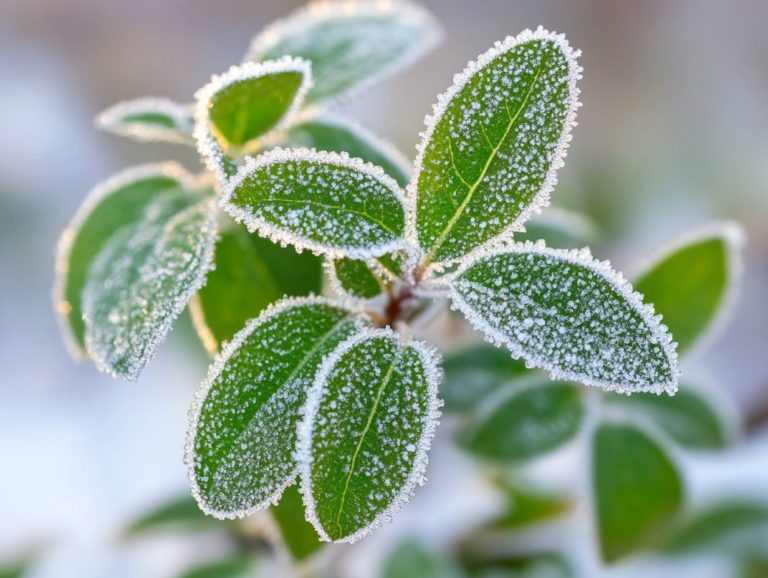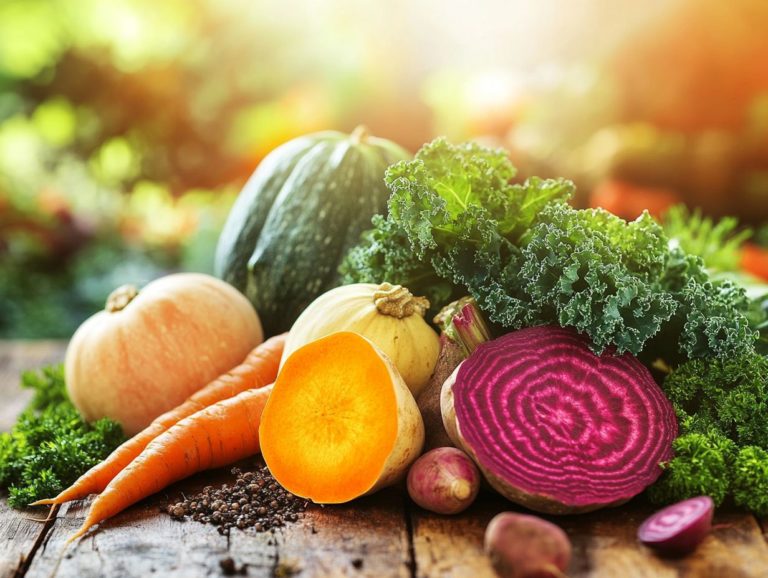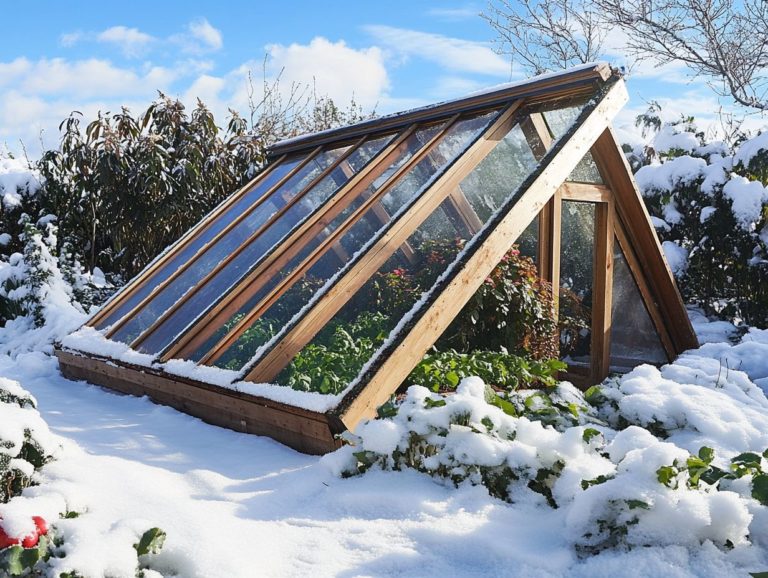How to Grow Garlic in Cold Climates
Garlic stands as a cherished culinary staple, yet cultivating it in cold climates presents its own set of challenges.
From choosing the right varieties to preparing the soil and timing your planting, every step is vital for achieving success. This guide delves into the essential elements of growing garlic in chilly conditions, providing insights on care, watering, and harvesting.
Whether you re an experienced gardener or just starting out, get ready to discover practical advice designed to help your garlic flourish even in frosty temperatures.
Contents
- Key Takeaways:
- Choosing the Right Garlic Varieties
- Preparing the Soil for Planting
- Planting Garlic in Cold Climates
- Caring for Garlic Plants in Cold Climates
- Harvesting and Storing Garlic
- Frequently Asked Questions
- 1. Can garlic be grown in cold climates?
- 2. What is the best time to plant garlic in cold climates?
- 3. How should I prepare the soil for growing garlic in a cold climate?
- 4. Can I grow garlic from grocery store cloves in a cold climate?
- 5. How often should I water garlic in a cold climate?
- 6. Should I fertilize garlic in a cold climate?
Key Takeaways:
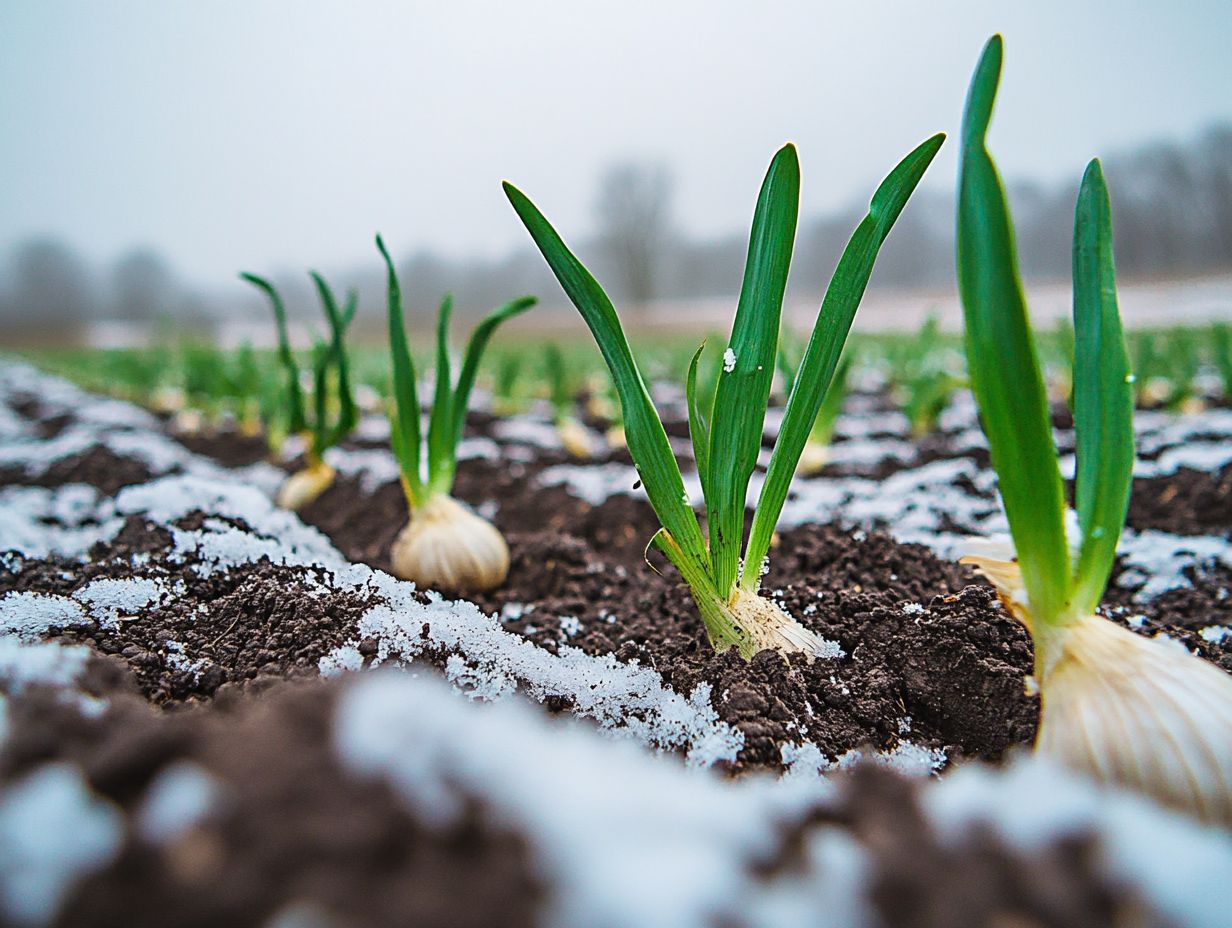
- Choose cold-hardy garlic varieties to ensure successful growth in colder regions.
- Prepare the soil properly with adequate drainage and nutrients for optimal garlic growth.
- Proper timing, planting techniques, and care are crucial for a successful garlic harvest in cold climates.
Why Growing Garlic in Cold Climates is Challenging
Growing garlic in cold climates, like those you find in Canada, comes with unique challenges that you’ll need to navigate. Harsh winters and fluctuating temperatures play significant roles in the success of your crop. To overcome these obstacles, it’s crucial to choose the right garlic varieties; how to successfully grow garlic in winter shows that hardneck garlic tends to thrive in these conditions thanks to its excellent ability to survive cold weather.
If you don t manage these plants carefully, they could fall prey to plant diseases caused by fungi that can harm your garlic and detract from both yield and flavor. Understanding the intricacies of garlic growth in colder zones is essential for maximizing the benefits of cultivating this versatile vegetable.
One particular hurdle you ll face is the arrival of fall frost, which can throw a wrench in your planting schedule. You must plant your garlic early to establish roots while avoiding the risk of damage from unexpected temperature drops.
Selecting disease-resistant strains of garlic is vital in these environments, as moisture levels and chilly air can encourage these plant diseases. The overall care of your garlic is also important; think proper mulching and timely irrigation tailored to the unique climate conditions to optimize your chances for a bountiful harvest.
Choosing the Right Garlic Varieties
Choosing the right garlic varieties is essential for your successful cultivation, especially in colder regions like Zone 3 in Canada. Here, hardneck garlic varieties tend to outshine their softneck counterparts.
Varieties such as Music garlic, Majestic garlic, and Chesnok Red excel in cold climates, providing you with robust flavor profiles and superior disease resistance.
By grasping the distinctions between hardneck and softneck garlic, you can select the varieties that will not only survive but truly thrive in your unique growing conditions.
Types of Garlic Suitable for Cold Climates
In cold climates, selecting the right garlic variety is crucial for a successful harvest. Hardneck garlic varieties like Music garlic, Majestic garlic, and Chesnok Red are particularly adept at withstanding low temperatures. While softneck garlic can be grown in these colder regions, it often doesn’t yield the same impressive results as its hardneck counterparts.
If you’re aiming to maximize your garlic harvest in areas like Zone 3, hardneck garlic is your go-to choice. These robust varieties are celebrated not only for their strong flavor profiles but also for their remarkable adaptability, thriving even in the harshest winter conditions.
When choosing seed garlic, pay attention to local soil temperatures and moisture levels for the best results. Alongside Music and Majestic, varieties such as Purple Stripe and Rocambole are also stellar options, thriving in cold climates while bringing unique tastes and textures to your table.
By understanding the specific needs of these garlic types, you can enjoy a bountiful harvest and explore a delightful array of flavors in your culinary creations.
Preparing the Soil for Planting
Proper soil preparation is essential for successful garlic cultivation, especially in brisk climates where soil conditions can be tricky. Garlic flourishes in rich, well-drained soil filled with important nutrients.
Before you plant, amend the soil with compost and other organic materials. This boosts its fertility and structure, creating the perfect environment for garlic. This not only enhances growth but also helps prevent garlic diseases by promoting healthy root development and ensuring proper drainage.
Optimal Soil Conditions for Garlic
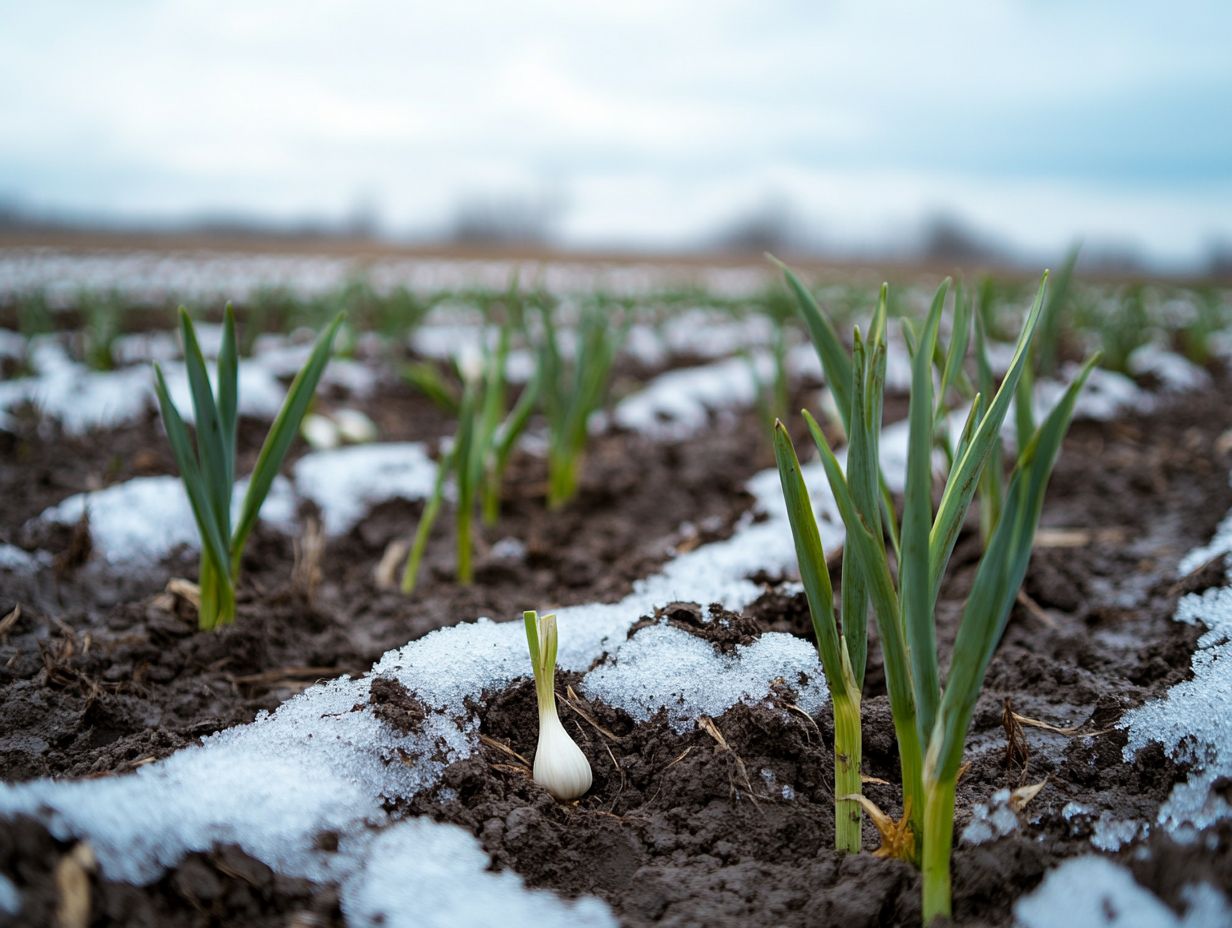
Optimal soil conditions for garlic are a harmonious blend of well-drained, nutrient-rich earth that nurtures strong root development. Garlic thrives in loose, aerated soil, which allows easy root growth and efficient nutrient absorption.
Maintaining a balanced soil structure is crucial to prevent waterlogging. Excess moisture can invite diseases and lower your crop yield. To achieve ideal conditions, add amendments like compost to support healthy growth.
Aim for a soil pH between 6.0 and 7.0, striking the right balance for nutrient availability. Your soil should be rich in organic matter and essential nutrients, especially nitrogen, phosphorus, and potassium. Improve soil drainage by incorporating sand or perlite to enhance aeration and prevent compaction.
Consider crop rotation, which means planting different crops in a specific area over time to enrich the soil and deter pests. Mulching helps retain moisture and regulates temperature, creating a stable environment for garlic to thrive.
Planting Garlic in Cold Climates
Planting garlic in cold climates requires attention to timing and technique for a bountiful harvest. The best time to plant is in the fall, just a few weeks before the ground freezes. To enhance your gardening success, consider these tips for forced bulbs in cold climates, as this timing allows the cloves to establish healthy roots.
Select a planting site that receives full sunlight and has well-drained soil. When planting, create holes deep enough to support robust growth while ensuring adequate spacing for air circulation around each garlic clove.
Best Time to Plant and Proper Techniques
The optimal time to plant garlic in colder climates is during the fall, typically about 4 to 6 weeks before the first hard frost. This ensures your garlic cloves have enough opportunity to establish roots before winter.
For effective planting, select healthy garlic cloves and create holes about 2 inches deep. This depth protects the cloves from extreme cold while allowing them to absorb the essential nutrients needed for robust growth come spring.
Preparing the garlic cloves is crucial. Break apart the bulbs just before planting to use only the largest and healthiest cloves, which yield the best results. Soaking the cloves in a mixture of water and baking soda for a few hours before planting can help fend off pests and diseases.
Timing is crucial. Pay attention to your local climate conditions; they indicate when soil temperatures start to cool this is your cue to plant. Even slight temperature changes in early winter can affect root development, highlighting the importance of being aware of local weather patterns.
Caring for Garlic Plants in Cold Climates
Nurturing your garlic plants in cold climates is an exciting journey that guarantees robust growth! Regular watering is essential, especially during dry spells, as garlic thrives on consistent moisture to develop strong bulbs. If you’re also interested in other crops, consider learning how to grow potatoes in cold climates for a successful garden.
Using organic fertilizers like Evolve Organic Fertilizer can significantly enrich the soil s nutrient profile. Mulching with materials such as garden straw helps retain moisture and suppress weeds.
Pay close attention to the growth of garlic scapes. This can provide valuable insights on when to adjust your care routine and prepare for the harvesting phase.
Get started on your garlic garden today for a rewarding harvest next season!
Watering, Fertilizing, and Mulching Tips
Effective watering, fertilizing, and mulching are critical components of garlic care that significantly enhance both plant health and harvest quality.
To achieve optimal growth, consider adopting specific watering techniques like drip irrigation or soaker hoses. These methods deliver moisture directly to the soil, minimizing evaporation and ensuring your garlic gets the hydration it needs.
In terms of fertilizers, opt for balanced organic options such as fish emulsion or well-rotted manure. These choices provide essential nutrients without any chemical additives, keeping your plants happy and healthy.
Mulching is an essential practice. Use materials like straw, shredded leaves, or wood chips to help maintain moisture levels while cutting down on pesky weed competition.
Timing is everything; for instance, mulching should be done early in the growing season. Balanced fertilization works best during the initial growth stages. Regular watering, ideally twice a week during dry spells, will further support healthy development and help prevent disease.
Harvesting and Storing Garlic

Harvest your garlic at just the right time for the best flavor and quality! Generally, you ll know it s time when the lower leaves start to brown, while the upper leaves maintain their vibrant green. This usually happens in mid to late summer.
After you ve harvested, using the right storage techniques is key to keeping that delightful garlic flavor and preventing spoilage. Cure your garlic bulbs in a dry, well-ventilated space, avoiding direct sunlight, to ensure they stay fresh and flavorful for as long as possible.
When and How to Harvest Garlic in Cold Climates
In cold climates, the timing and technique you use for harvesting garlic are crucial for achieving a successful yield and high-quality bulbs. Plan to harvest your garlic when the lower leaves have turned brown and dried this typically happens around mid to late summer in cooler regions.
During the harvesting process, careful handling is essential; damaging the bulbs can lead to disease and spoilage while in storage.
Using the right tools, like a garden fork or spade, can significantly help you preserve the integrity of the bulbs as you extract them from the soil. Techniques such as gently loosening the soil around the bulbs before lifting them can greatly reduce stress.
It s also important to understand your local climate patterns. Harvesting too early in wet conditions may yield immature bulbs, while waiting too long could expose them to frost damage.
By keeping these factors in mind, you can ensure that your garlic is harvested at the optimal time and retains its quality for long-term storage.
Proper Storage Techniques for Fresh Garlic
Proper storage techniques for fresh garlic are crucial to preserving its flavor and extending its shelf life post-harvest. After you harvest those garlic bulbs, cure them by placing them in a dry, dark, and well-ventilated area for about 2 to 3 weeks. This drying process helps harden the outer skins and prevents rot, allowing you to store garlic for several months.
Once cured, keep it in a cool, dry place, and you ll be able to enjoy its robust flavor in a variety of recipes.
Along with curing, you might consider other effective storage methods, such as:
- Braiding softneck garlic
- Using breathable mesh bags
Braiding softneck garlic not only looks great but also allows for better airflow, which keeps the bulbs dry. Similarly, breathable mesh bags help prevent moisture accumulation, significantly reducing the risk of spoilage.
By employing proper storage techniques, you ensure longevity while preserving the aromatic compounds that enhance flavor in your dishes. This, in turn, allows the numerous health benefits of garlic like its anti-inflammatory properties and immune support to remain intact, making it a valuable ingredient in both your culinary adventures and wellness practices.
Frequently Asked Questions
1. Can garlic be grown in cold climates?
Absolutely, garlic can thrive in cold climates as long as it is planted in the fall and follows best practices for planting garlic in winter while provided with proper winter protection.
2. What is the best time to plant garlic in cold climates?
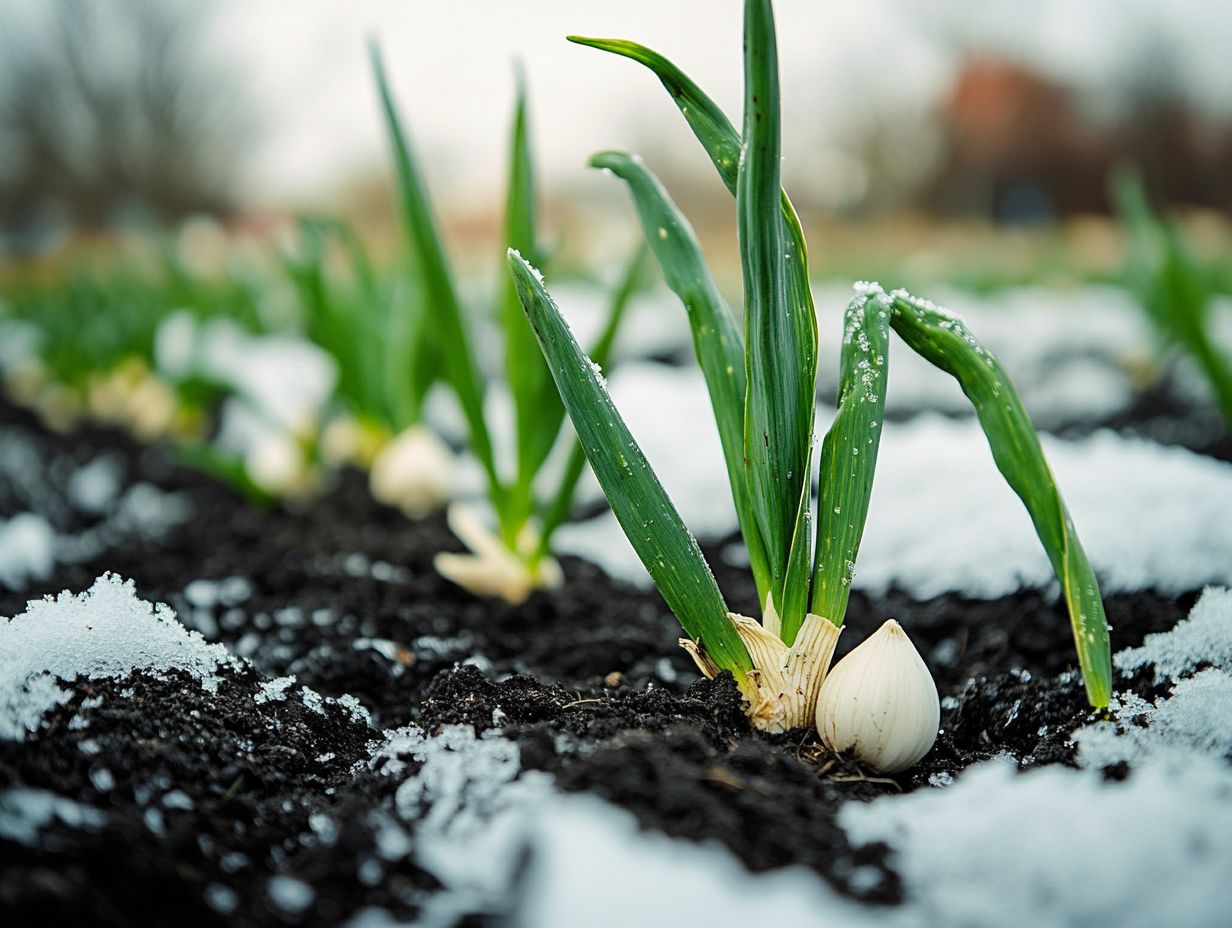
The best time to plant garlic in cold climates is in the fall. Aim to plant it 4 to 6 weeks before the ground freezes.
3. How should I prepare the soil for growing garlic in a cold climate?
Before planting, loosen the soil and add compost to improve drainage. Adding a layer of mulch (a protective covering) can also help keep the garlic warm.
4. Can I grow garlic from grocery store cloves in a cold climate?
While you can grow garlic from grocery store cloves, it’s better to buy planting garlic that is suited for cold weather. Additionally, if you’re interested in other crops, learning how to grow spinach in cold weather can also give you a higher chance of success!
5. How often should I water garlic in a cold climate?
Garlic loves consistent moisture, so water it every 3 to 5 days when it s dry! Be careful not to overwater, as this can lead to rot in cold climates.
6. Should I fertilize garlic in a cold climate?
Yes! Fertilizing with a balanced organic fertilizer can help promote healthy growth and development in cold climates. Just be careful not to over-fertilize, as this can damage the plants.

